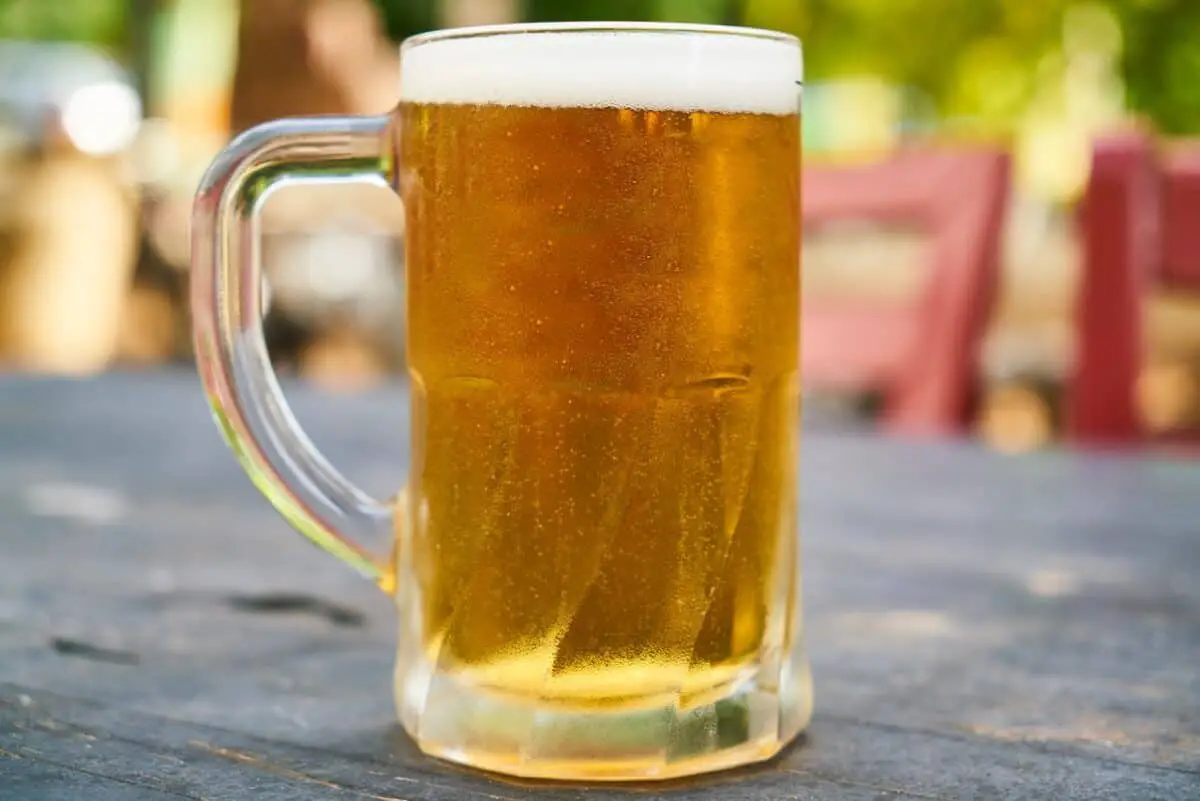If you buy something through a link in our posts, we may get a small share of the sale.
Lager vs wheat beer has been debated among beer lovers and brewers for centuries. These two are the backbone of beer brewing, and that is why it is vital to understand how each impacts the final product. What similarities and differences do they possess that influence the choice one makes?
Contents
Lager vs Wheat Beer Overview
Lagers and wheat beers are the most consumed alcoholic beverages globally. These two types of beer have different characteristics that set them apart, ranging from the type of yeast used to the taste. Therefore, if you are a beer enthusiast, it is vital to understand these characteristics to make an informed decision. This will help you enjoy a beer that suits your taste and preference.

Lager
Lager is perhaps the most consumed beer style globally since it can be found in almost every liquor store. The beer is brewed and conditioned at a low temperature, giving it a smooth and refreshing finish. The reason why lagers are brewed at a lower temperature is because of the type of yeast used.
Lagers generally use bottom-fermenting yeast. Bottom-fermenting is where the yeast settles at the bottom of the fermenting vessel and requires a low temperature to produce alcohol and carbon dioxide. The ideal temperature for bottom fermentation ranges from 48 and 58 degrees Fahrenheit. The result is a light-colored beer that is highly carbonated with an alcoholic range of between 3% to 6% ABV.
There are different types of lager beer available in the market, each with its unique flavor profile. Some of the known lagers include Pilsner, Bock, Doppelbock, Maibock, Vienna Lager, and Imperial Pilsner. Lager beers pair well with foods such as sushi, light seafood, grilled pork, chicken, and paster dishes. The best temperature for serving lagers is anywhere between 38 to 40 degrees Fahrenheit.
Advantages
- The low alcohol content in lager beers is perfect for beginners or people who don’t want to get intoxicated quickly
- Lager beers are usually low in calories. This is ideal for people suffering from celiac disease
- Lagers beers are available in wide styles and brands. This helps beer lovers consume the beer of their choice
- Lagers can help reduce heart disease when consumed in moderation. Most lager beers contain polyphenol content that helps lower the risk of cancer and heart disease
Disadvantages
- Lager beers require a longer fermentation time due to the type of yeast used (bottom-fermentation yeast). This can make it a bit expensive for the brewer and consumer
- Like any other beer, lagers can have adverse health issues if consumed excessively. For instance, it can damage the liver or cause cancer
Wheat Beer
This beer is brewed using top-fermenting yeast with a larger percentage of wheat (50%) and other grains such as barley. It is one of the oldest beers that was first brewed in Egypt and Mesopotamia. Other European countries, such as Germany, later joined the game and crafted real wheat beer, now consumed globally.
The top-fermenting yeast used in brewing beer means that the yeast settles at the top of the fermenting vessel. This type of fermentation often requires warmer temperatures to ferment the beer effectively (60 and 78 degrees Fahrenheit). The warmer temperatures provide an ideal environment for the yeast to work on wort and produce alcohol and carbon dioxide. That is why the beer takes a shorter time to brew than lager.
Like lager, this type of beer also comes in different types to suit the taste and preference of beer lovers. They include Allagash White, Samuel Adams, Blue Moon Belgian White, Weihenstephaner Hefe, and Lindemans Lambic. This beer pairs well with vegetarian dishes, sushi, Gruyère cheese, light soups, and salads. The alcohol ranges from 2.5% to 5% ABV.

Advantages
- It contains aromatic compounds known as polyphenols. These compounds are perfect for regulating the immune system and preventing cancer
- The wheat used in brewing these types of beer contains more proteins and fiber. Fiber helps to lower cholesterol levels, while protein is ideal for building muscles and block of bones
- The low alcohol content in this beer can be ideal for newbies or people who do not want to get intoxicated quickly
- It can be a good source of vitamins such as B vitamins. These vitamins help ensure the body cells are working properly
Disadvantages
- Excessive consumption of this type of beer can cause a hangover. This can later lead to headaches, nausea, fatigue, and weakness
- It can lead to weight gain due to the high calories in wheat(if consumed in excess)
Comparison Between the Two Beers
These two types of beer have similarities and differences worth noting before deciding which to consume. They include:
Similarities
- Both are types of beer brewed using the basic ingredients; yeast, water, grain, and hops
- Both have health benefits, such as protecting against cholesterol and heart disease
- Both are readily available in most countries, making it easy to grab one of your choices
- Both are light and refreshing, plus they can be enjoyed cold
- Both beers are pale, light, and golden yellow in color
Differences
- Wheat beer is brewed at a warmer temperature using a top-fermenting yeast, while lager uses a bottom-fermenting yeast and is brewed at a low temperature
- Wheat beer has a slightly lower alcohol range(2.5% to 5% ABV) than lager(3% to 6% ABV)
- Lager primarily uses barley, rice, or corn during the brewing process, while wheat beer uses a large portion of malted or unmalted wheat(up to 50%)
The Major Distinguishing Factor
The main difference between these two types of beer is how they are brewed. Generally, lagers are brewed at a lower temperature using bottom-fermenting yeast. On the other hand, wheat beer is brewed at a warmer temperature using top-fermenting yeast.
When to Drink Lager Beer
The best time to drink lager beer is when you want a drink with a slightly high alcohol content. Lagers have an alcohol range of between 3% to 6%, which is good if you are a beginner or want a drink that will not intoxicate you quickly.
When to Drink Wheat Beer
The ideal time for drinking this type of beer is when you want a drink with a slightly low alcohol content and rich in fiber. These types of beer have an alcohol range of 2.5% to 5%ABV and are rich in fiber that can help lower cholesterol levels in your body.

Which Is Better Wheat Beer vs Lager?
The better one is wheat beer because it is brewed using high-quality ingredients. Besides being a source of starch and energy, wheat also contains vitamins, proteins, and dietary fiber. All these compounds are beneficial to the body when consumed in moderation.
Related Questions
Why Is Wheat Beer So Good?
The beer is good because of its creamy texture. The wheat in it creates a silky and creamy texture that provides a long-lasting head on the beer. The beer also contains compounds such as fiber, proteins, and vitamins that benefit the body.
Why Is Wheat Beer Less Bitter?
The beer is less bitter due to the type of yeast used during brewing. The yeast gives it a fruity-like and spicy character, making it easy to sip. This is suitable for beginners or people who find bitter beer irritating.
Which Beer Is Good for the Liver?
The beer that is good for the liver is one infused with hops. Hops provide the bitterness that balances the sweetness in wort and protects against the accumulation of liver fat. Therefore, you should consume beer rich in hops, such as pale ale.
Conclusion
These two types of beer are widely available drinks with different flavor profiles and characteristics. Understanding the similarities and differences makes you better positioned to choose one that suits your taste and preference. Whether you like a refreshing lager or a complex wheat beer, you will definitely come across your taste.

